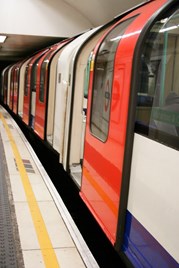 Read the peer review for this feature.
Read the peer review for this feature.
Download the graphs for this feature.
As the number of people using the railways increases year on year, so the demand increases for the industry to manage potential risk at stations, particularly at the interface between the platform and the train (known as the PTI - Platform Train Interface).
Rail is a genuinely safe way to travel, especially when compared with other modes of land transport. During 2013-14 there were 1.6 billion passenger journeys made and more than 115 million tons of freight carried, illustrating that it is also a popular choice.
To accommodate for higher passenger numbers and to manage risk, the industry has been collaborating through the Rail Safety and Standards Board to develop a strategy aimed at improving safety, performance, capacity and accessibility. The result? A dedicated PTI strategy, launched in January 2015.
The PTI represents 21% of the risk of harm and 48% of the risk of fatal harm to passengers and accounts for between 1,250 and 1,500 injuries per year. Between April 2009 and April 2014 there were also 18 fatalities. During this period, well over seven billion passenger journeys were made by rail. Notwithstanding the greater share of journeys by car, in the five calendar years 2009-2013, 9,440 people died on Britain’s roads.
In the past decade, Britain has been Europe’s fastest-growing railway, with passenger numbers up by 50%. This increase will ultimately lead to a growth in the number of people boarding and alighting trains.
The strategy has been created to ensure that the railway is in the best position to handle the operational and engineering challenges for capacity and safety at the PTI, both now and in the future. It is an excellent example of how to establish consistent industry approaches to complex issues - looking at data, human factors, operations and engineering matters.
So what does the strategy hope to achieve? It will look at key issues affecting the industry today and in the future, including:
- Passenger movements through the station and across the PTI.
- Train stopping positions, dispatch, monitoring the dispatch corridor, and stopping once dispatched, including the management of doors.
- Optimising the step gap.
- Improving accessibility.
The strategy intends to generate:
- Improvements in industry’s data and intelligence gathering on incidents.
- Better knowledge sharing between companies about good practice.
- A new tool for companies to use, to assess the specific risks they need to manage in their own operational environments.
- Improved public, passenger and workforce awareness of the issues surrounding the PTI.
An action plan for delivery has also been created. This plan will provide a framework for what can be achieved in the short, medium and long term. The group of industry representatives selected to generate the strategy will continue to oversee its deployment and champion its implementation.
A series of PTI risk reduction targets have been established. These are the outcomes from a combination of cross-industry workshops, to build a better picture of what specific mitigation activities can be undertaken and where they will have the biggest impact.
The Platform Train Interface Strategy Implementation Group (PTISIG) composed of representatives from Network Rail, train operating companies, rolling stock companies, the Office of Rail and Road, the Department for Transport and London Underground, will continue to meet throughout 2015. The focus of these meetings will be to maintain the momentum of the strategy and ensure it delivers benefits to industry.
The Strategy is available to download from the Rail Hub at www.railreview.com.
 Peer review: Ian Prosser
Peer review: Ian Prosser
Director of Railway Safety, ORR
Britain’s railways remain one of the safest in Europe, but the industry cannot rest on its laurels - there are still areas such as workforce safety and crowd management in stations that require significant improvement and investment. The highest risk for passenger fatality and major injury is when getting on and off the train, or getting too close to the platform edge - the ‘platform train interface’ (PTI).
Until recently, reducing the PTI risk was handled by operators and infrastructure managers in separate ways. It was clear to ORR this was not working and that for the risk to be managed more effectively, a different approach was needed. ORR recognised that it was vital that the industry began to collaborate and understand the issues presented by a continuing growth in demand and develop a joint approach to addressing the challenges of designing and managing the PTI for the future.
This is why ORR has brought together operators and infrastructure managers to develop a strategy to cope with the pressures of growing passenger numbers and trains.
The RSSB’s PTI strategy marks the first industry-wide attempt to optimise the management of the PTI in terms of safety, operational performance and availability of access and provides the industry with an action plan for the key areas needing improvement, such as the optimum design for trains and platforms; agreed standards for train dispatch and station staff training; and promoting safe passenger behaviour with publicity and signage.
Since its launch, ORR’s inspectors have seen examples of best practice being shared and have reported improvements in PTI safety management. However, there is a considerable amount of work to do as the industry develops its understanding of the issues around safety on platforms, through improved data collection and analysis, and its extensive research programme.
For the strategy to succeed and for the rail industry to retain its credibility, train and infrastructure operators must engage with governments to deal with the longer-term issues, including the introduction of level access, gaps fillers and platform-edge doors. Some safety enhancement may only be reasonably practicable if implemented at the starting point of an infrastructure’s lifecycle, and therefore major infrastructure projects present significant opportunities to design out or reduce risks.
Good design decisions can improve safety for both passengers and railway staff in the construction, use, inspection and maintenance of both the new assets and the existing railway.
The high-level of fatality and major injury risk posed by PTI means ORR’s inspectors continue to inspect station passenger management plans closely for PTI management. This includes periodic visual inspections to ensure proactive management is effective. The future passenger crowding challenge means we must keep pushing operators’ to improve their capabilities on day-to-day crowding measures.
We are also focused on the design of new or additional infrastructure, stations and rolling stock, and engineering solutions to help reduce PTI risk. We want to ensure that interim asset management, risk mitigation standards and controls are implemented effectively. Looking ahead, it is essential that senior managers consider the potential for safety improvements as projects specification are scoped and budgeted – and this remains one of our long-term priorities.

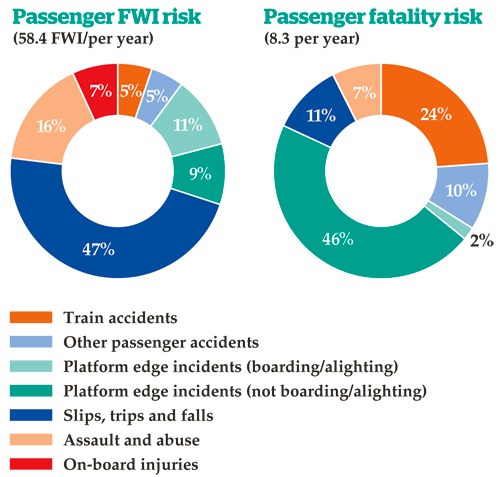
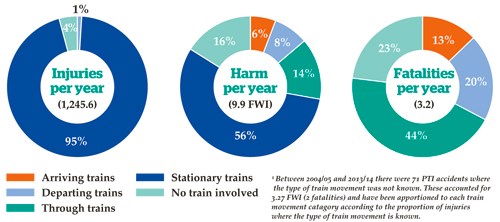
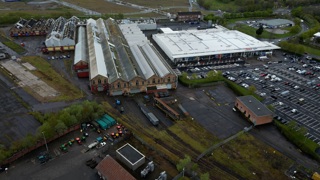

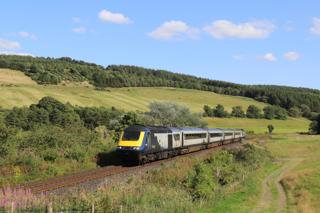
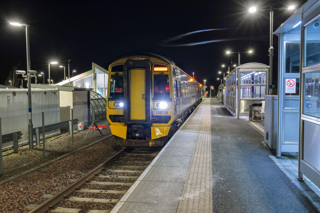
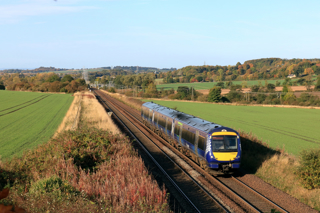












Login to comment
Comments
No comments have been made yet.